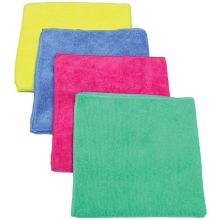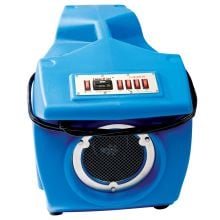Clandestine Meth Lab Cleanup Procedures
Warning: Before undertaking any meth lab cleanup efforts, it is imperative the you check whether your state/city/county requires licensing or specific protocols to be followed.
Properties used to produce methamphetamine will usually be found within a lab-like setting ("Meth lab"), including containers of chemicals, heat sources, and various types of lab equipment. Typically, after a lab is discovered by law enforcement, the bulk of any lab-related debris, such as chemicals and containers, is removed. However, it is possible that a small amount of contamination may be left on surfaces, such as sinks, drains, and ventilation systems, or in absorbent materials, such as carpets and furniture. Though found in small amounts, meth lab contaminants may pose health threats to persons exposed to them.
Many of the contaminants present during meth's cooking process can be harmful if someone is exposed to them. These contaminants can cause health problems including respiratory (breathing) problems, skin and eye irritation, headaches, nausea, and dizziness. Acute (short-term) exposures to high concentrations of some of these chemicals, such as those law enforcement officers face when they first enter a lab, can cause severe health problems including lung damage and burns to different parts of the body.
During the meth cooking process, vapors are given off that can spread and be absorbed by nearby materials. Spilled chemicals, supplies, and equipment can further contaminate non-lab items. It is a good idea to remove unnecessary items from the property and dispose of them properly. Items that are visibly contaminated should be removed from the property and may be disposed of in a local landfill.
Basic Steps to cleaning a former meth property:
- Air out the property before and during cleanup
- Remove all unnecessary items and dispose of them
- Remove visibly contaminated items or items that have an odor
- Clean all surfaces using proper personal protection. Clean the ventilation system
- Leave plumbing cleaning to the experts
Option 1
- Ventilate contained areas. There is no need to keep the site under negative pressure. It is a good idea to use carbon filters in your air scrubbers.
- Remove all porous items.
- Use a HEPA vacuum to clean all surfaces.
- Perform pH testing to determine areas to be cleaned and what products they should be cleaned with (alkaline or acid based).
- Use only disposable rags for wet cleaning. Each rag should clean a max of 4' x 4' area (2' is recommended)
- Perform post-cleaning testing to ensure you've done a thorough job.
- Seal surfaces using Fiberlock Lead Barrier Compound (this step is not required, but recommended).
Option 2
- Ventilate contained areas. There is no need to keep the site under negative pressure. It is a good idea to use carbon filters in your air scrubbers.
- Remove all porous items.
- Use a HEPA vacuum to clean all surfaces.
- Perform pH testing to determine areas to be cleaned and what products they should be cleaned with (alkaline or acid based).
- Use only disposable rags for wet cleaning. Each rag should clean a max of 4' x 4' area (2' is recommended)
- Heat the area to 105ºF for 6 to 8 hours while using air scrubbers with carbon filters. You can also use ozone with heat (Ozone is not preferred since the heat/airflow greatly diminishes the effectiveness).
- Perform post-cleaning testing to ensure you've done a thorough job.
- Seal surfaces using Fiberlock Lead Barrier Compound (this step is not required, but recommended).




We pay the shipping charge, including hazardous material fees, on this item. There's no catch. No "buy this to get that" requirement.
Note: If your order contains items that are not eligible for free shipping, your order total will include our competitive shipping rates for those non-eligible items only. This shipping policy only applies to orders shipped within the Contiguous U.S.

